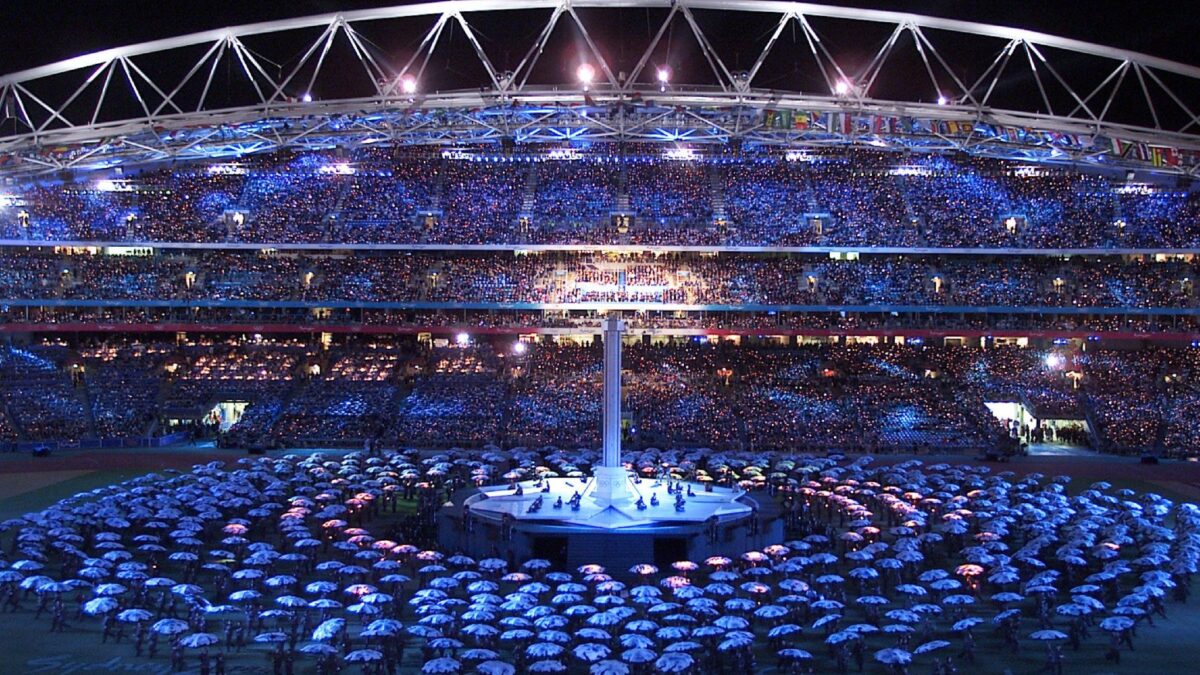News

September 25, 2020

The loss of being together in a physical space with thousands of people this year has reinforced how much watching live sports and entertainment together makes a difference to people’s lives. It is a natural human condition to want to gather and the coronavirus pandemic has proven just how important it is for humanity to experience this feeling.
Populous creates designs that have been, and still are, key parts of social infrastructure for many cities across the globe, becoming vital pieces of the urban fabric. September 2020 is important to Populous as it marks the 20th Anniversary of the Sydney 2000 Olympic Games, the time when the venue, now known as ANZ Stadium, made its debut on the world stage.
Populous Managing Director for the Asia Pacific region, Paul Henry, said it is central to Populous to design venues that become the platform for evoking great emotion.
“Over the past 20 years, 28 million people have sat in ANZ Stadium and our design was central to the enjoyment of those fans,” Paul said.
Paul was the project director for the design of the Olympic Stadium, and said it was a humbling experience for the team to design such an important piece of infrastructure.
“The design brief was to create a ‘distinctively-Australian’ building for the Olympics but, it had to re-configure post-Games from over 110,000 seats down to 80,000, as a more sustainable major event stadium for Sydney.
“It had to be one that would live up to the Olympic Opening Ceremony while supporting the existing infrastructure of the city and the sustainable environmental goals,” Paul said.
To accommodate the Olympics, the design solution of the stadium included temporary north and south stands to host the major international event and post-Games, a design that removed the upper end tiers to reduce the stadium for its long-term use.
These learnings have successfully been applied to several other Populous-designed projects where stadia have been given more radical “redesigns”, including the 2012 London Olympic Stadium which was reconfigured after the event for its legacy mode.
“Our design was not a flash of singular inspiration, it was the outcome of a considered design process and diversity of thought. It’s part of the nature of our buildings, that they take a long time from idea to completion and that we require a huge range of skill sets to function as a firm at the leading edge of design.
“Sit with a crowd at the Olympics and you will see passion, togetherness and humanity.
“Watch a musician on stage interact and lift the spirits of the room and you will see the human connection heightened with joy.
“This is what we strive for every day in our work. We create and enhance those moments,” Paul said.
ANZ Stadium was a global pioneer in sport design that harvested its own energy and launched Australia’s future in environmental design and sustainable infrastructure – the Green Building Council.
Since 2000, Populous has worked on every Summer and Winter Olympic Games including Beijing 2022 Winter Olympics, allowing the firm to continue to innovate their venue designs, precinct master plans for precincts and the use temporary facilities (overlay) that makes hosting a Games more sustainable for communities.
Stadium Australia was designed in a joint venture know as Bligh Lobb Sports Architecture. The name Populous was adopted by the firm in 2009.
Lorem ipsum dolor sit amet consectetur, adipisicing elit. Non facere corporis et expedita sit nam amet aut necessitatibus at dolore enim quis impedit eius libero, harum tempore laboriosam dolor cumque.
Lorem, ipsum dolor sit amet consectetur adipisicing elit. Illo temporibus vero veritatis eveniet, placeat dolorem sunt at provident tenetur omnis, dicta exercitationem. Expedita quod aspernatur molestias eum? Totam, incidunt quos.